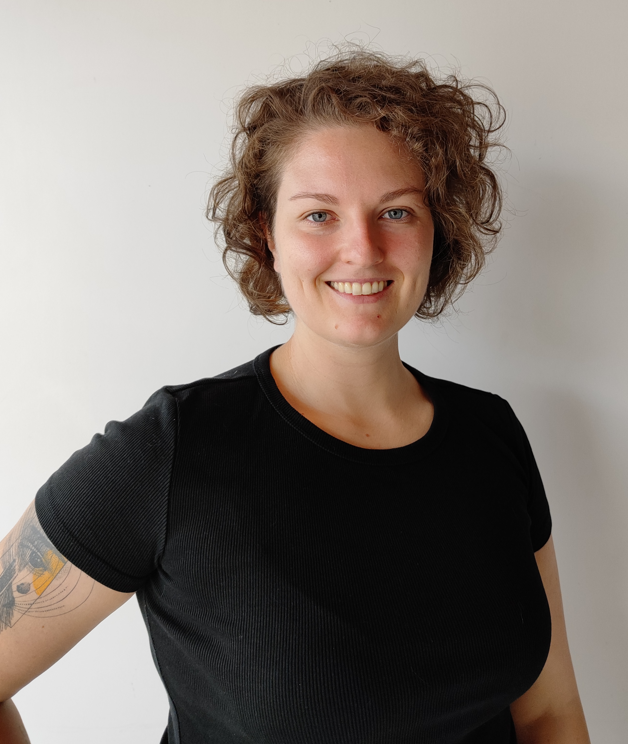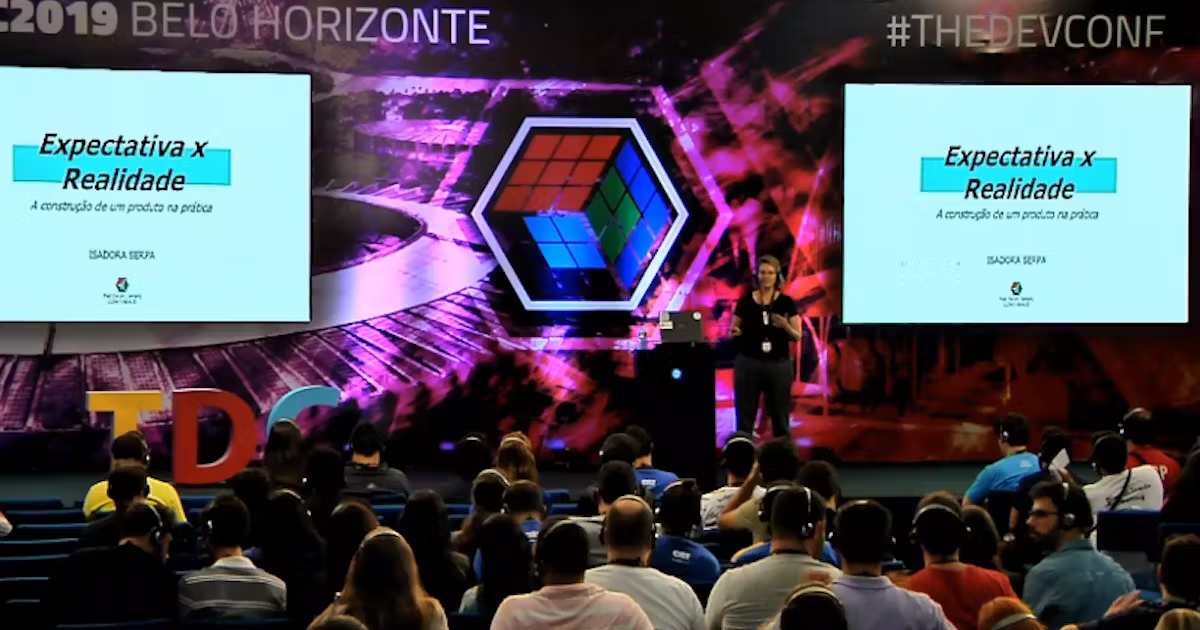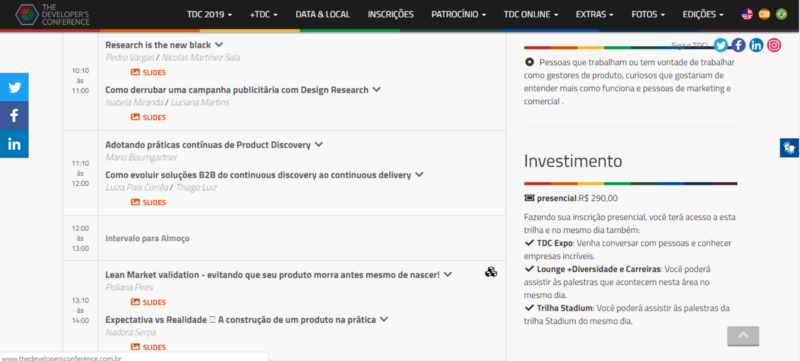9 Essential Steps to Prepare for a Successful Lecture
 Isa Serpa
Isa Serpa
In this article, I share how I prepared for presenting the lecture "Expectation vs Reality: Building a Product in Practice" at The Developers Conference - BH in the Product Management track.
Check the event schedule It's important to review the event's content lineup to understand what the audience is looking to learn. This helps plan the presentation and identify relevant topics for the track. I gathered information about the event, particularly the Product Management track.

Understand the audience's profile Having attended two TDCs in Porto Alegre helped me realize that it's a community event with a focus on practical cases and hands-on presentations. The event program provides insights into the audience's profile, aiding in understanding the context. A WhatsApp group created by coordinators also facilitated planning and addressing questions.
- Have a central message and three main points A central message guides the flow of slides, enabling a coherent beginning, middle, and end to the presentation. In my talk, the central message was: "Expectations can differ from reality multiple times, so it's essential to adapt techniques to the work context and take the first step without waiting for ideal conditions."
The three main points aimed to spark discussion and reflection among professionals attending:
a) Putting into practice: In times of information abundance, filtering, adapting techniques, and implementing them makes a real difference. Initiating experiments, learning from each one, and trying again following the Lean Startup methodology - build, measure, learn.
b) Teamwork: Innovation and digital product development require convergence and divergence to achieve more innovative and accurate solutions. Therefore, collaborative work by a multidisciplinary team is fundamental. Innovation and diversity are inevitably linked, so diverse teams encompassing different areas, profiles, and experiences are vital.
c) If you're going to fail, fail fast and cheap: Rapid and cost-effective validation of hypotheses and functionalities is crucial for product evolution and increased accuracy. Working in this way helps minimize risks through experiments.
- Tell a story Storytelling in a presentation is an effective way to engage and connect with the audience. A good story helps people understand the beginning, middle, and end of the presentation, and keeps them interested in the narrative. When sharing a compelling story, the audience is impacted and stimulated to reflect on the points mentioned.
Some examples of useful storytelling:
Customer-focused: The story of how your product/service addressed a specific need or solved a problem for users.
Company-focused: How your company became what it is today or a significant impact that is worth sharing. Focus on process, methodology, culture.
Product development-focused: How a new product or service was developed and offered. Focus on the conception, development, and delivery process.
For my presentation, I chose the product development-focused example, sharing how we built the new Sicredi app, with an emphasis on the discovery and delivery process.
- Support arguments with evidence It's important to include references in the presentation, either throughout the slides or at the end. Citing sources not only adds credibility but also shows that the subject was studied and well-researched.
Balance between references and practical stories is necessary. Therefore, combining references with real-life examples is valuable. In my case, I used references as topics to share my learnings during the process of building the new app.
- Seek help from others Although the presentation is done by one person, having specialists and colleagues suggest improvements and provide feedback is beneficial. Different perspectives can be enriching.
During the presentation development, I sought regular feedback from colleagues from various areas at work. This helped me understand if the central message was clear and if the content conveyed what I wanted to share. I took notes of the feedback and made several adjustments from the first version to the final one before the event.
- Create an engaging template The design of the presentation influences how the audience perceives the content. Even if the content is well-known and memorized, the presentation should support what is being said. Highlighting topics on the slide without overwhelming it with text, resembling an article, is an interesting approach. The audience is likely seeking testimonials and insights.
I used Canva.com to create the TDC-BH presentation, an excellent online tool with templates suggesting colors, images, and elements. I chose a template and adapted it as needed. Along the way, I decided to use GIFs, which only work in Canva's online mode. To avoid potential internet issues during the event, I switched to PowerPoint.
Canva offers a free version with limited access to presentations and elements, which is quite good. Additionally, it allows exporting the presentation to PDF for offline use.
Rehearse the presentation before the actual event To practice the presentation, material, and timing, I presented to colleagues from different areas of expertise (design, marketing, strategy) at my workplace. They provided genuine feedback and ideas for improvement. I am grateful for their support, as it not only helped me prepare but also allowed me to adapt some aspects of the presentation, making a difference in the event. This rehearsal occurred a week before the event and was taken seriously, presenting with final slides, timing, and as if I didn't know the audience. It significantly improved all aspects of the presentation and boosted my confidence for the event.
Trust in preparation and ability Preparation of material, speech, and content is crucial as it minimizes anxiety and increases confidence. Therefore, it's essential to trust in the process, believe in the ability to present, and have confidence that the preparation was done to the best of one's ability. To feel more secure and confident, I sought feedback throughout the presentation's preparation, researched references, practiced alone and with colleagues. Being open to criticism was important to receive feedback positively and achieve the best results.
It was my first time speaking at The Developers Conference Stadium, the main auditorium of the event with live streaming and Spanish translation. It was an important experience for me as I learned a lot from the preparation, the presentation itself, and met incredible people during the event.
Source: https://www.eventials.com/Globalcode/tdc-bh-2019-stadium-quinta-7/
Presenting a lecture is a courageous act, as it shows vulnerability and openness to expose oneself. It's not an easy task and takes people out of their comfort zones. It's a personal and professional challenge from which one learns a lot about self-awareness, public speaking, and the content being discussed. I was delighted to share with more people what was accomplished with the team, the results obtained, and especially everything we learned from our successes and mistakes throughout the process. I certainly learned a lot from preparing this presentation, and the effort was worthwhile.
And you, do you have any lectures in mind?
Do you think you'll use some of these tips? Share your feedback :)
—
References:
Speaking tips
Subscribe to my newsletter
Read articles from Isa Serpa directly inside your inbox. Subscribe to the newsletter, and don't miss out.
Written by

Isa Serpa
Isa Serpa
I work as a Global Group Product Manager in Rewards Program (Club Tada) in AB-Inbev the biggest beverage delivery app in Brazil. I am passionate about innovation, solving problems and team work. I write about Product Management, Leadership and Productivity.